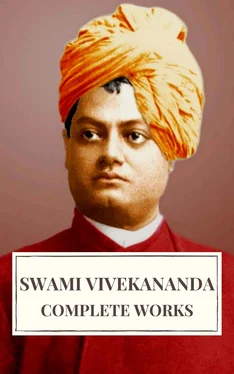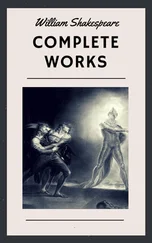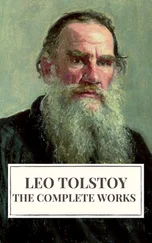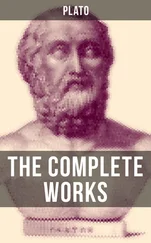In the first place, there is no mystery in what I teach. What little I know I will tell you. So far as I can reason it out I will do so, but as to what I do not know I will simply tell you what the books say. It is wrong to believe blindly. You must exercise your own reason and judgment; you must practice, and see whether these things happen or not. Just as you would take up any other science, exactly in the same manner you should take up this science for study. There is neither mystery nor danger in it. So far as it is true, it ought to be preached in the public streets, in broad daylight. Any attempt to mystify these things is productive of great danger.
Before proceeding further, I will tell you a little of the Sânkhya philosophy, upon which the whole of Raja-Yoga is based. According to the Sankhya philosophy, the genesis of perception is as follows: the affections of external objects are carried by the outer instruments to their respective brain centres or organs, the organs carry the affections to the mind, the mind to the determinative faculty, from this the Purusha (the soul) receives them, when perception results. Next he gives the order back, as it were, to the motor centres to do the needful. With the exception of the Purusha all of these are material, but the mind is much finer matter than the external instruments. That material of which the mind is composed goes also to form the subtle matter called the Tanmâtras. These become gross and make the external matter. That is the psychology of the Sankhya. So that between the intellect and the grosser matter outside there is only a difference in degree. The Purusha is the only thing which is immaterial. The mind is an instrument, as it were, in the hands of the soul, through which the soul catches external objects. The mind is constantly changing and vacillating, and can, when perfected, either attach itself to several organs, to one, or to none. For instance, if I hear the clock with great attention, I will not, perhaps, see anything although my eyes may be open, showing that the mind was not attached to the seeing organ, while it was to the hearing organ. But the perfected mind can be attached to all the organs simultaneously. It has the reflexive power of looking back into its own depths. This reflexive power is what the Yogi wants to attain; by concentrating the powers of the mind, and turning them inward, he seeks to know what is happening inside. There is in this no question of mere belief; it is the analysis arrived at by certain philosophers. Modern physiologists tell us that the eyes are not the organ of vision, but that the organ is in one of the nerve centres of the brain, and so with all the senses; they also tell us that these centres are formed of the same material as the brain itself. The Sankhyas also tell us the same thing The former is a statement on the physical side, and the latter on the psychological side; yet both are the same. Our field of research lies beyond this.
The Yogi proposes to attain that fine state of perception in which he can perceive all the different mental states. There must be mental perception of all of them. One can perceive how the sensation is travelling, how the mind is receiving it, how it is going to the determinative faculty, and how this gives it to the Purusha. As each science requires certain preparations and has its own method, which must be followed before it could be understood, even so in Raja-Yoga.
Certain regulations as to food are necessary; we must use that food which brings us the purest mind. If you go into a menagerie, you will find this demonstrated at once. You see the elephants, huge animals, but calm and gentle; and if you go towards the cages of the lions and tigers, you find them restless, showing how much difference has been made by food. All the forces that are working in this body have been produced out of food; we see that every day. If you begin to fast, first your body will get weak, the physical forces will suffer; then after a few days, the mental forces will suffer also. First, memory will fail. Then comes a point, when you are not able to think, much less to pursue any course of reasoning. We have, therefore, to take care what sort of food we eat at the beginning, and when we have got strength enough, when our practice is well advanced, we need not be so careful in this respect. While the plant is growing it must be hedged round, lest it be injured; but when it becomes a tree, the hedges are taken away. It is strong enough to withstand all assaults.
A Yogi must avoid the two extremes of luxury and austerity. He must not fast, nor torture his flesh. He who does so, says the Gita, cannot be a Yogi: He who fasts, he who keeps awake, he who sleeps much, he who works too much, he who does no work, none of these can be a Yogi (Gita, VI, 16).
Chapter II. The First Steps
Râja-Yoga is divided into eight steps. The first is Yama — non-killing, truthfulness, non-stealing, continence, and non-receiving of any gifts. Next is Niyama — cleanliness, contentment, austerity, study, and self-surrender to God. Then comes Âsana, or posture; Prânâyâma, or control of Prâna; Pratyâhâra, or restraint of the senses from their objects; Dhâranâ, or fixing the mind on a spot; Dhyâna, or meditation; and Samâdhi, or superconsciousness. The Yama and Niyama, as we see, are moral trainings; without these as the basis no practice of Yoga will succeed. As these two become established, the Yogi will begin to realise the fruits of his practice; without these it will never bear fruit. A Yogi must not think of injuring anyone, by thought, word, or deed. Mercy shall not be for men alone, but shall go beyond, and embrace the whole world.
The next step is Asana, posture. A series of exercises, physical and mental, is to be gone through every day, until certain higher states are reached. Therefore it is quite necessary that we should find a posture in which we can remain long. That posture which is the easiest for one should be the one chosen. For thinking, a certain posture may be very easy for one man, while to another it may be very difficult. We will find later on that during the study of these psychological matters a good deal of activity goes on in the body. Nerve currents will have to be displaced and given a new channel. New sorts of vibrations will begin, the whole constitution will be remodelled as it were. But the main part of the activity will lie along the spinal column, so that the one thing necessary for the posture is to hold the spinal column free, sitting erect, holding the three parts — the chest, neck, and head — in a straight line. Let the whole weight of the body be supported by the ribs, and then you have an easy natural postures with the spine straight. You will easily see that you cannot think very high thoughts with the chest in. This portion of the Yoga is a little similar to the Hatha-Yoga which deals entirely with the physical body, its aim being to make the physical body very strong. We have nothing to do with it here, because its practices are very difficult, and cannot be learned in a day, and, after all, do not lead to much spiritual growth. Many of these practices you will find in Delsarte and other teachers, such as placing the body in different postures, but the object in these is physical, not psychological. There is not one muscle in the body over which a man cannot establish a perfect control. The heart can be made to stop or go on at his bidding, and each part of the organism can be similarly controlled.
The result of this branch of Yoga is to make men live long; health is the chief idea, the one goal of the Hatha-Yogi. He is determined not to fall sick, and he never does. He lives long; a hundred years is nothing to him; he is quite young and fresh when he is 150, without one hair turned grey. But that is all. A banyan tree lives sometimes 5000 years, but it is a banyan tree and nothing more. So, if a man lives long, he is only a healthy animal. One or two ordinary lessons of the Hatha-Yogis are very useful. For instance, some of you will find it a good thing for headaches to drink cold water through the nose as soon as you get up in the morning; the whole day your brain will be nice and cool, and you will never catch cold. It is very easy to do; put your nose into the water, draw it up through the nostrils and make a pump action in the throat.
Читать дальше












